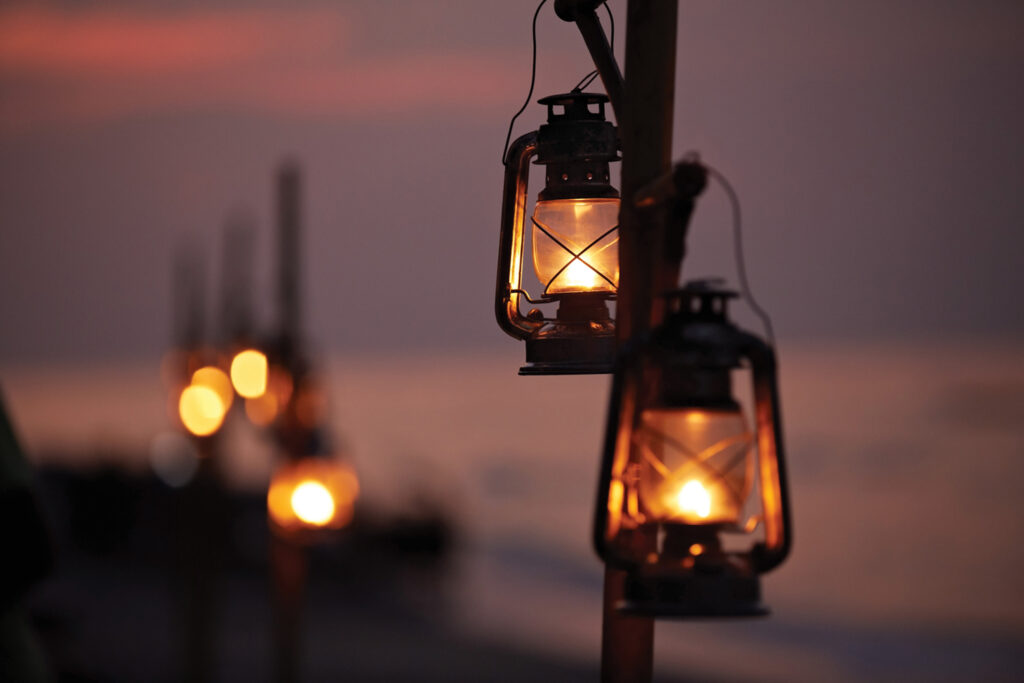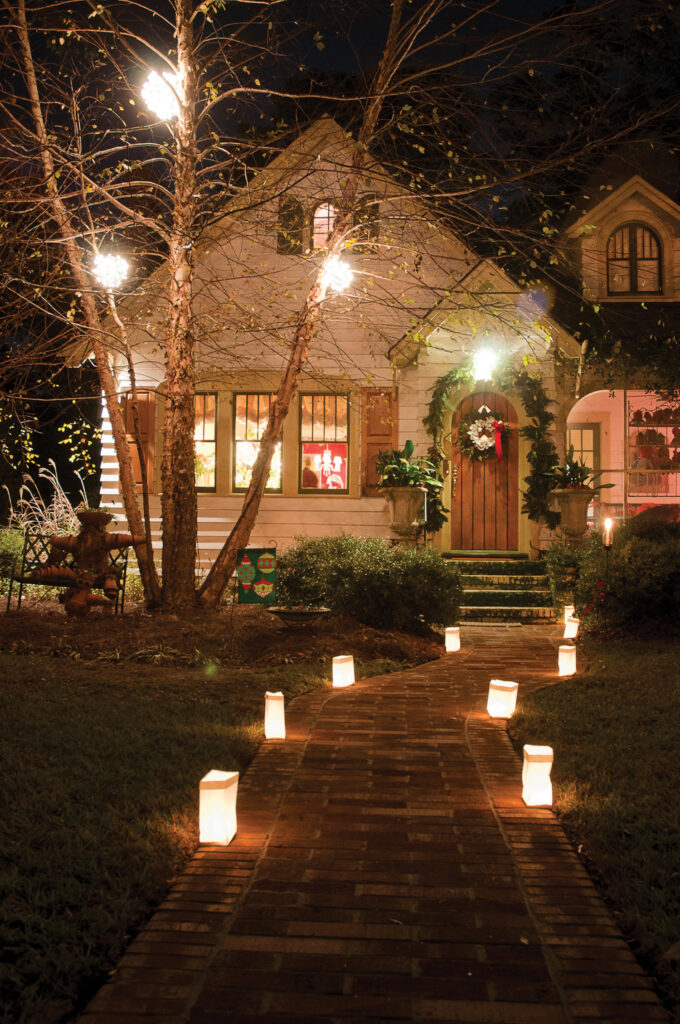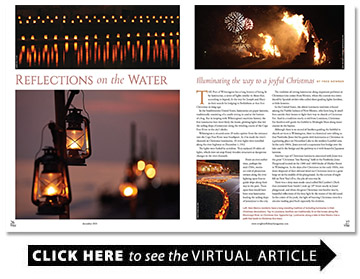Reflections on the Water
Illuminating the way to a joyful Christmas
BY Fred Newber

The Port of Wilmington has a long history of being lit by luminarias, a series of lights similar to those that, according to legend, lit the way for Joseph and Mary in their search for lodging in Bethlehem at that first Christmas so long ago.
In the Southwestern United States, luminarias are paper lanterns, traditionally consisting of a candle sitting in sand at the bottom of a bag. But in keeping with Wilmington’s maritime history, the first luminarias here were likely the warm, glowing lights that led the sailing ships of yesteryear along the winding course of the Cape Fear River to the city’s docks.
Wilmington is situated some 29 miles upriver from the entrance into the Cape Fear River near Southport. As if to mark the river’s channels in Christmas luminarias, 33 river lights were installed along the river highway on December 1, 1912.
The lights were fueled by acetylene. They replaced 29 older oil lights, which were set atop flimsy wooden structures at dangerous changes in the river channels.
From an even earlier time, perhaps the mid-1700s, stories are told of plantation owners along the river lighting open fires to guide ships along their way to the port. These open fires would have been true luminarias leading the sailing ships of yesteryear to the city.
The tradition of setting luminarias along important pathways at Christmas time comes from Mexico, where the custom was introduced by Spanish settlers who called these guiding lights farolitos, or little lanterns.
In the United States, the oldest luminaria tradition is found among the Pueblo Indians of New Mexico, who have long lit small fires outside their homes to light their way to church at Christmas Eve. And in a tradition nearly as old from Louisiana, Christmas Eve bonfires still guide the faithful to Midnight Mass along water courses in the bayous.
Although there is no record of farolitos guiding the faithful to church services in Wilmington, there is a historical note telling us that Pembroke Jones led his guests with luminarias at Christmas to a gathering place on Horseshoe Lake in the modern Landfall area. In the early 1900s, Jones erected a suspension foot bridge over the lake and lit the bridge and the pathway to it with beautiful Japanese lanterns.
Another type of Christmas luminaria associated with Jones was the great “Christmas Tree Burning” held in the Pembroke Jones Playground located in the 1300 and 1400 blocks of Market Street in Wilmington. In the days after Christmas in the early 1900s, residents disposed of their old and dried out Christmas trees in a great heap set in the middle of the playground. As the curtain of night fell on New Year’s Eve, the pile of trees was lit.

There was a deep man-made canal called McCumber’s Ditch that extended from Smith Creek up 14th Street nearly to Jones’ playground, and when the great Christmas tree bonfire was lit, beautiful reflections of the fiery light lit the waters of the old canal. In the center of the park, the light of burning Christmas trees lit a circular wading pool built especially for children.
In more modern times, luminarias have been lit at Christmas to guide participants in the Old Wilmington by Candlelight Tour, a walking tour through Wilmington’s old buildings sponsored by the Lower Cape Fear Historical Society.
The luminarias consist of a single white wax candle set inside a white paper bag, usually anchored down with a stone or two. As they are lit, the warm glow contrasts with the strings of multicolored lights that are woven from pole to pole along Wilmington’s Front Street.
Our tour of the Christmas lights that have been reflected on Wilmington’s waterways would not be complete without a mention of the beautiful lights that glitter in the North Carolina Holiday Flotilla observed at Wrightsville Beach at the beginning of the Christmas season.
The Flotilla, traditionally held the last weekend in November, is a sparkling parade of boats bedecked in Christmas lights. The lights cast shimmering luminarias across the waters of Banks Channel where the boats parade on the west side of the beach.
Wrightsville Beach’s Holiday Flotilla is a wonderful way to revisit the old, shimmering luminarias that once reflected on Wilmington’s great river highway, lights that led ships from all over the world to our home port.
